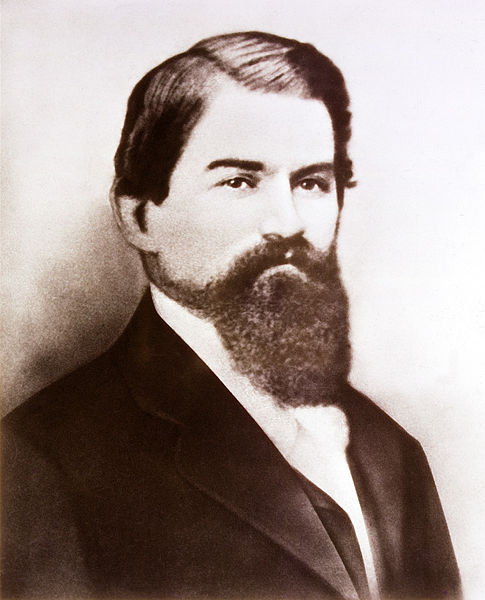|
Coca-Cola Building (Los Angeles)
The Coca-Cola Building is a Coca-Cola bottling plant modeled as a Streamline Moderne building designed by architect Robert V. Derrah with the appearance of a ship with portholes, catwalk and a bridge from five existing industrial buildings in 1939. It is located at 1334 South Central Avenue in Los Angeles, California. It was designated Los Angeles Historic-Cultural Monument Number 138 on 5 Feb 1975. It is often referred to as the Coke Building. See also *List of Los Angeles Historic-Cultural Monuments in Downtown Los Angeles Notes References *Marian Moffett, Michael W. Fazio, Lawrence Wodehouse. A world history of architecture. McGraw-Hill Professional, 2003. , . Coca-Cola Bottling Plant in Chapter 15 Art Deco, page 499 and Figure 15.42Google books External links Big Orange Landmarks. Exploring the Landmarks of Los Angeles, One Monument at a Time. Several external views plus one interior picture. Los Angeles Los Angeles ( ; es, Los Ángeles, link=no , ), often ... [...More Info...] [...Related Items...] OR: [Wikipedia] [Google] [Baidu] |
Los Angeles
Los Angeles ( ; es, Los Ángeles, link=no , ), often referred to by its initials L.A., is the largest city in the state of California and the second most populous city in the United States after New York City, as well as one of the world's most populous megacities. Los Angeles is the commercial, financial, and cultural center of Southern California. With a population of roughly 3.9 million residents within the city limits , Los Angeles is known for its Mediterranean climate, ethnic and cultural diversity, being the home of the Hollywood film industry, and its sprawling metropolitan area. The city of Los Angeles lies in a basin in Southern California adjacent to the Pacific Ocean in the west and extending through the Santa Monica Mountains and north into the San Fernando Valley, with the city bordering the San Gabriel Valley to it's east. It covers about , and is the county seat of Los Angeles County, which is the most populous county in the United States with an ... [...More Info...] [...Related Items...] OR: [Wikipedia] [Google] [Baidu] |
California
California is a state in the Western United States, located along the Pacific Coast. With nearly 39.2million residents across a total area of approximately , it is the most populous U.S. state and the 3rd largest by area. It is also the most populated subnational entity in North America and the 34th most populous in the world. The Greater Los Angeles area and the San Francisco Bay Area are the nation's second and fifth most populous urban regions respectively, with the former having more than 18.7million residents and the latter having over 9.6million. Sacramento is the state's capital, while Los Angeles is the most populous city in the state and the second most populous city in the country. San Francisco is the second most densely populated major city in the country. Los Angeles County is the country's most populous, while San Bernardino County is the largest county by area in the country. California borders Oregon to the north, Nevada and Arizona to the ea ... [...More Info...] [...Related Items...] OR: [Wikipedia] [Google] [Baidu] |
Downtown Los Angeles
Downtown Los Angeles (DTLA) contains the central business district of Los Angeles. In addition, it contains a diverse residential area of some 85,000 people, and covers . A 2013 study found that the district is home to over 500,000 jobs. It is also part of Central Los Angeles. Downtown Los Angeles is divided into neighborhoods and districts, some overlapping. Most districts are named for the activities concentrated there now or historically, e.g. the Arts, Civic Center, Fashion, Banking, Theater, Toy, and Jewelry districts. It is the hub for the city's urban rail transit system plus the Pacific Surfliner and Metrolink commuter rail system for Southern California. Banks, department stores, and movie palaces at one time drew residents and visitors of all socioeconomic classes downtown, but the area declined economically especially after the 1950s. It remained an important center—in the Civic Center, of government business; on Bunker Hill, of banking, and along Broadway, of ... [...More Info...] [...Related Items...] OR: [Wikipedia] [Google] [Baidu] |
South Los Angeles
South Los Angeles, also known as South Central Los Angeles or simply South Central, is a region in southwestern Los Angeles County, lying mostly within the city limits of Los Angeles, south of downtown. It is "defined on Los Angeles city maps as a 16-square-mile rectangle with two prongs at the south end.” In 2003, the Los Angeles City Council renamed this area "South Los Angeles". The name South Los Angeles can also refer to a larger 51-square mile region that includes areas within the city limits of Los Angeles as well as five unincorporated areas in the southern portion of the County of Los Angeles."South L.A." Mapping L.A. website of the ''Los Angeles Times'' Geography City of Los Angeles The City of Los Angeles delineates the South Los Angeles Commu ...[...More Info...] [...Related Items...] OR: [Wikipedia] [Google] [Baidu] |
Streamline Moderne
Streamline Moderne is an international style of Art Deco architecture and design that emerged in the 1930s. Inspired by aerodynamic design, it emphasized curving forms, long horizontal lines, and sometimes nautical elements. In industrial design, it was used in railroad locomotives, telephones, toasters, buses, appliances, and other devices to give the impression of sleekness and modernity. In France, it was called the ''style paquebot'', or "ocean liner style", and was influenced by the design of the luxury ocean liner SS ''Normandie'', launched in 1932. Influences and origins As the Great Depression of the 1930s progressed, Americans saw a new aspect of Art Deco, ''i.e.'', streamlining, a concept first conceived by industrial designers who stripped Art Deco design of its ornament in favor of the aerodynamic pure-line concept of motion and speed developed from scientific thinking. The cylindrical forms and long horizontal windowing in architecture may also have been influe ... [...More Info...] [...Related Items...] OR: [Wikipedia] [Google] [Baidu] |
Coca-Cola
Coca-Cola, or Coke, is a carbonated soft drink manufactured by the Coca-Cola Company. Originally marketed as a temperance drink and intended as a patent medicine, it was invented in the late 19th century by John Stith Pemberton in Atlanta, Georgia. In 1888, Pemberton sold Coca-Cola's ownership rights to Asa Griggs Candler, a businessman, whose marketing tactics led Coca-Cola to its dominance of the global soft-drink market throughout the 20th and 21st century. The drink's name refers to two of its original ingredients: coca leaves and kola nuts (a source of caffeine). The current formula of Coca-Cola remains a closely guarded trade secret; however, a variety of reported recipes and experimental recreations have been published. The secrecy around the formula has been used by Coca-Cola in its marketing as only a handful of anonymous employees know the formula. The drink has inspired imitators and created a whole classification of soft drink: colas. The Coca-Cola C ... [...More Info...] [...Related Items...] OR: [Wikipedia] [Google] [Baidu] |
Los Angeles, California
Los Angeles ( ; es, Los Ángeles, link=no , ), often referred to by its initials L.A., is the largest city in the state of California and the second most populous city in the United States after New York City, as well as one of the world's most populous megacities. Los Angeles is the commercial, financial, and cultural center of Southern California. With a population of roughly 3.9 million residents within the city limits , Los Angeles is known for its Mediterranean climate, ethnic and cultural diversity, being the home of the Hollywood film industry, and its sprawling metropolitan area. The city of Los Angeles lies in a basin in Southern California adjacent to the Pacific Ocean in the west and extending through the Santa Monica Mountains and north into the San Fernando Valley, with the city bordering the San Gabriel Valley to it's east. It covers about , and is the county seat of Los Angeles County, which is the most populous county in the United States with ... [...More Info...] [...Related Items...] OR: [Wikipedia] [Google] [Baidu] |
Los Angeles Historic-Cultural Monument
Los Angeles Historic-Cultural Monuments are sites which have been designated by the Los Angeles, California, Cultural Heritage Commission as worthy of preservation based on architectural, historic and cultural criteria. History The Historic-Cultural Monument process has its origin in the Historic Buildings Committee formed in 1958 by the Los Angeles chapter of the American Institute of Architects. As growth and development in Los Angeles threatened the city's historic landmarks, the committee sought to implement a formal preservation program in cooperation with local civic, cultural and business organizations and municipal leaders. On April 30, 1962, a historic preservation ordinance proposed by the AIA committee was passed. The original Cultural Heritage Board (later renamed a commission) was formed in the summer of 1962, consisting of William Woollett, FAIA, Bonnie H. Riedel, Carl S. Dentzel, Senaida Sullivan and Edith Gibbs Vaughan. The board met for the first time in August ... [...More Info...] [...Related Items...] OR: [Wikipedia] [Google] [Baidu] |
List Of Los Angeles Historic-Cultural Monuments In Downtown Los Angeles
Los Angeles Historic-Cultural Monuments (LAHCMs) in Downtown Los Angeles, Los Angeles, California are designated by the City's Cultural Heritage Commission. There are more than 120 LAHCMs in the downtown area. These include the Los Angeles Plaza Historic District, Old Plaza Historic District, Little Tokyo, Los Angeles, California, Little Tokyo, Chinatown, Los Angeles, California, Chinatown, the Broadway Theater and Commercial District, Broadway Theater District, the Spring Street Financial District, and the Fashion District, Los Angeles, California, Fashion District. Current and former Historic-Cultural Monuments Listed in the National Register of Historic Places See also Lists of L.A. Historic-Cultural Monuments * List of Los Angeles Historic-Cultural Monuments on the East and Northeast Sides, Historic-Cultural Monuments on the East and Northeast Sides * List of Los Angeles Historic-Cultural Monuments in the Harbor area, Historic-Cultural Monuments in the Harbor area * L ... [...More Info...] [...Related Items...] OR: [Wikipedia] [Google] [Baidu] |
Coca-Cola Buildings And Structures
Coca-Cola, or Coke, is a carbonated soft drink manufactured by the Coca-Cola Company. Originally marketed as a temperance bar, temperance drink and intended as a patent medicine, it was invented in the late 19th century by John Stith Pemberton in Atlanta, Atlanta, Georgia. In 1888, Pemberton sold Coca-Cola's ownership rights to Asa Griggs Candler, a businessman, whose marketing tactics led Coca-Cola to its dominance of the global soft-drink market throughout the 20th and 21st century. The drink's name refers to two of its original ingredients: coca leaves and kola nuts (a source of caffeine). The current Coca-Cola formula, formula of Coca-Cola remains a closely guarded trade secret; however, a variety of reported recipes and experimental recreations have been published. The secrecy around the formula has been used by Coca-Cola in its marketing as only a handful of anonymous employees know the formula. The drink has inspired imitators and created a whole classification of so ... [...More Info...] [...Related Items...] OR: [Wikipedia] [Google] [Baidu] |
Buildings And Structures In Downtown Los Angeles
A building, or edifice, is an enclosed structure with a roof and walls standing more or less permanently in one place, such as a house or factory (although there's also portable buildings). Buildings come in a variety of sizes, shapes, and functions, and have been adapted throughout history for a wide number of factors, from building materials available, to weather conditions, land prices, ground conditions, specific uses, prestige, and aesthetic reasons. To better understand the term ''building'' compare the list of nonbuilding structures. Buildings serve several societal needs – primarily as shelter from weather, security, living space, privacy, to store belongings, and to comfortably live and work. A building as a shelter represents a physical division of the human habitat (a place of comfort and safety) and the ''outside'' (a place that at times may be harsh and harmful). Ever since the first cave paintings, buildings have also become objects or canvasses of much artist ... [...More Info...] [...Related Items...] OR: [Wikipedia] [Google] [Baidu] |









